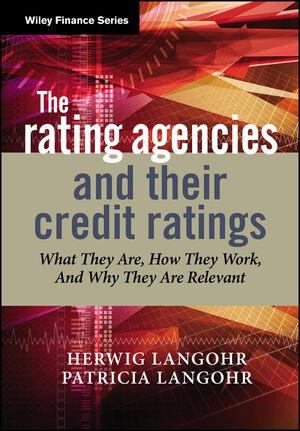The Rating Agencies and Their Credit Ratings: What They Are, How They Work, and Why They are RelevantISBN: 978-0-470-01800-2
Hardcover
524 pages
March 2009
 |
||||||
Foreword
Preface
1 Introduction
1.1 Context and Premises
1.2 Book Chapters
1.3 Supporting Materials
PART A: CREDIT RATING FOUNDATIONS
2 Credit Ratings
2.1 The World of Corporate Defaults
2.2 Credit Rating Scales
2.3 The Interpretation of Credit Ratings
2.4 Credit Ratings: Summary and Conclusions
3 The ‘Raison d’Être’ of Credit Ratings and Their Market
3.1 Needs for Credit Ratings – or the Demand Side of Ratings
3.2 Credit Ratings as a Solution to Information Asymmetry: Economic Analysis.
3.3 Credit Rating Segments – or Scale and Scope of the Rated Universe.
4 How to Obtain and Maintain a Credit Rating
4.1 The Rating Preparation
4.2 The Rating
4.3 Quality of the Rating Process
PART B: CREDIT RATING ANALYSIS
5 The France



